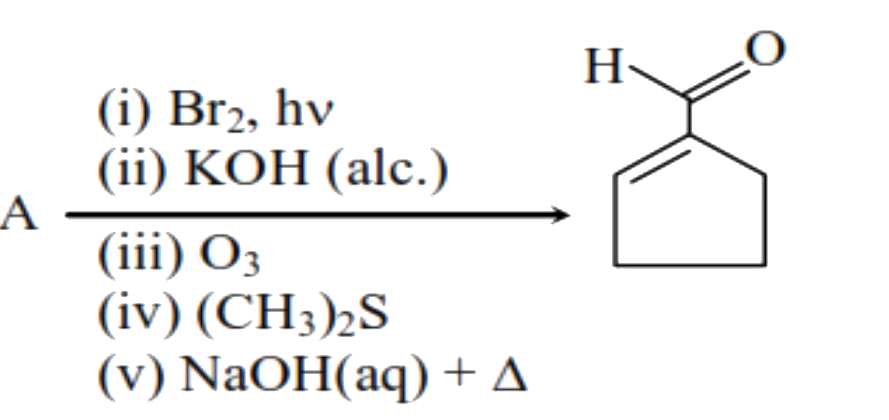
The following reaction is:
A
Nucleophilic substitution
B
Electrophilic
C
Substitution
D
Free radical substitution
Video Solution
Text Solution
The correct Answer is:A

Because OH− is nucleophile.
|
Topper's Solved these Questions
- ORGANIC COMPOUNDS CONTAINING NITROGENBOOK - A2ZCHAPTER - ORGANIC COMPOUNDS CONTAINING NITROGENEXERCISE - Section B - Assertion Reasoning
11 Videos
- ORGANIC COMPOUNDS CONTAINING NITROGENBOOK - A2ZCHAPTER - ORGANIC COMPOUNDS CONTAINING NITROGENEXERCISE - AIPMT/NEET Questions
26 Videos
- ORGANIC COMPOUNDS CONTAINING NITROGENBOOK - A2ZCHAPTER - ORGANIC COMPOUNDS CONTAINING NITROGENEXERCISE - Aromatic Amines And Diazonium Salts
61 Videos
- ORGANIC COMPOUNDS CONTAINING HALOGENSBOOK - A2ZCHAPTER - ORGANIC COMPOUNDS CONTAINING HALOGENSEXERCISE - Section D - Chapter End Test
30 Videos
- P BLOCK ELEMENTS ( GROUP 15,16,17,18)BOOK - A2ZCHAPTER - P BLOCK ELEMENTS ( GROUP 15,16,17,18)EXERCISE - Section D - Chapter End Test
30 Videos
Similar Questions
Knowledge Check
In following reaction
A2 and 16B16 and 2C8 and 16D5 and 2In the following reaction :
 A
A B
B C
C DNone of the above
DNone of the aboveWhich of the following reactions is a decomposition reaction ?
AHCl + NaOH → NaCl + H2OBZn+CuSO4→ZnSO4+CuC2HgOΔ−−→2Hg+O2DCO2+H2O→H2CO3
In the following reaction A is

View SolutionWhich of the following reactions is a synthesis reaction?
View SolutionWhich of the following reactions is a synthesis reaction?
View SolutionWhich of the following reactions is Kolbe's reaction ?
View SolutionWhich of the following reactions is a redox reaction?
View Solution


